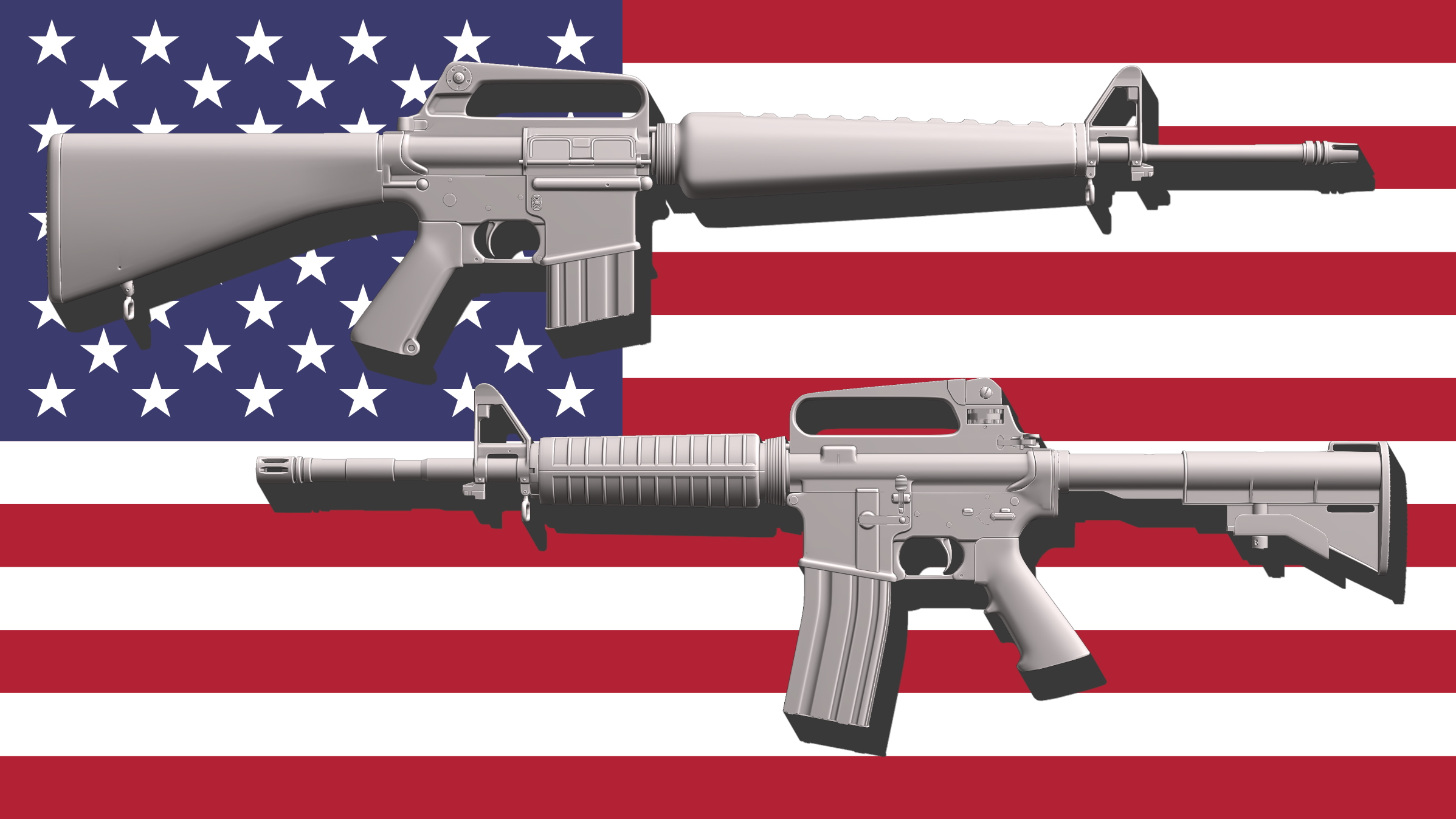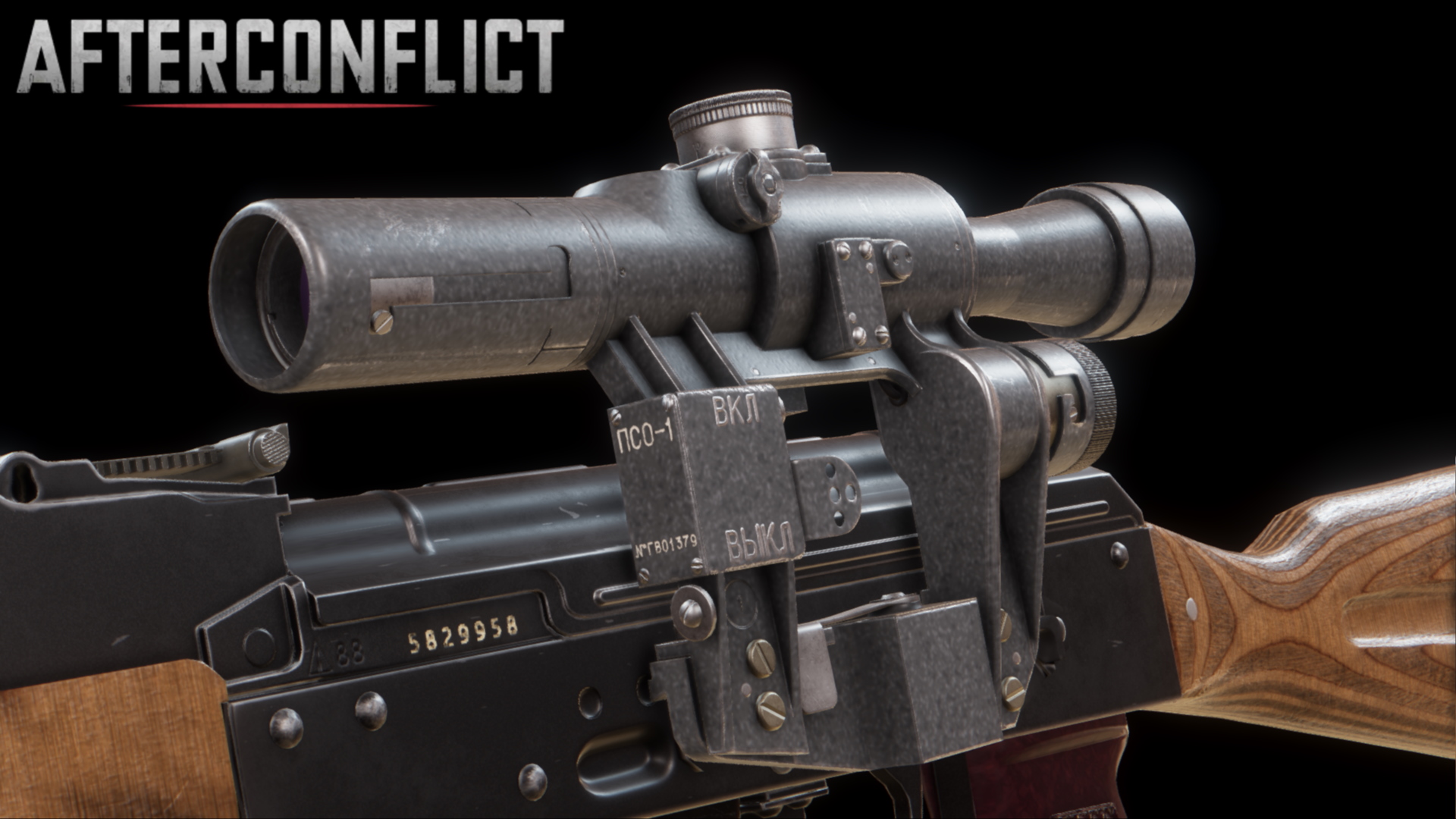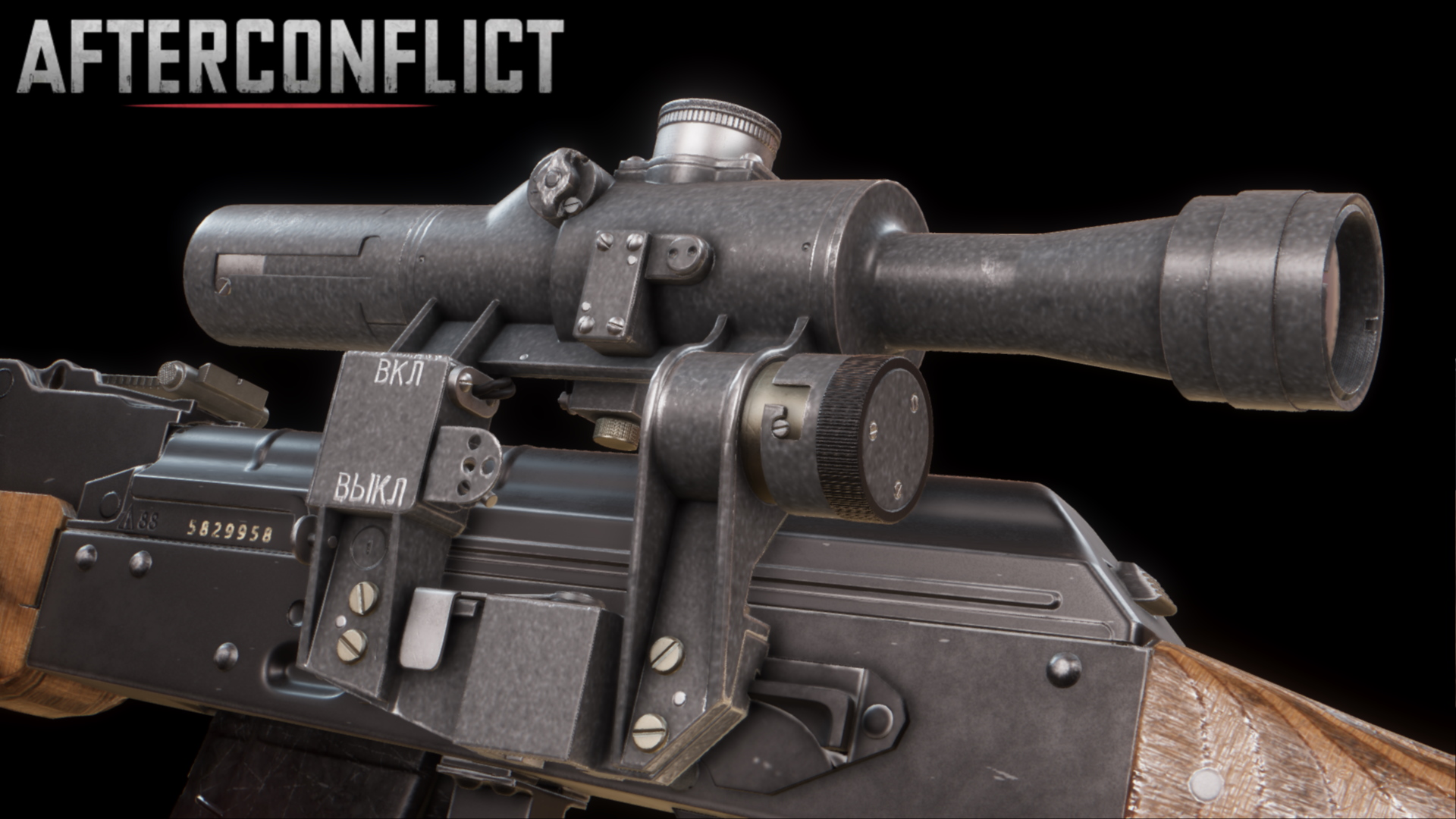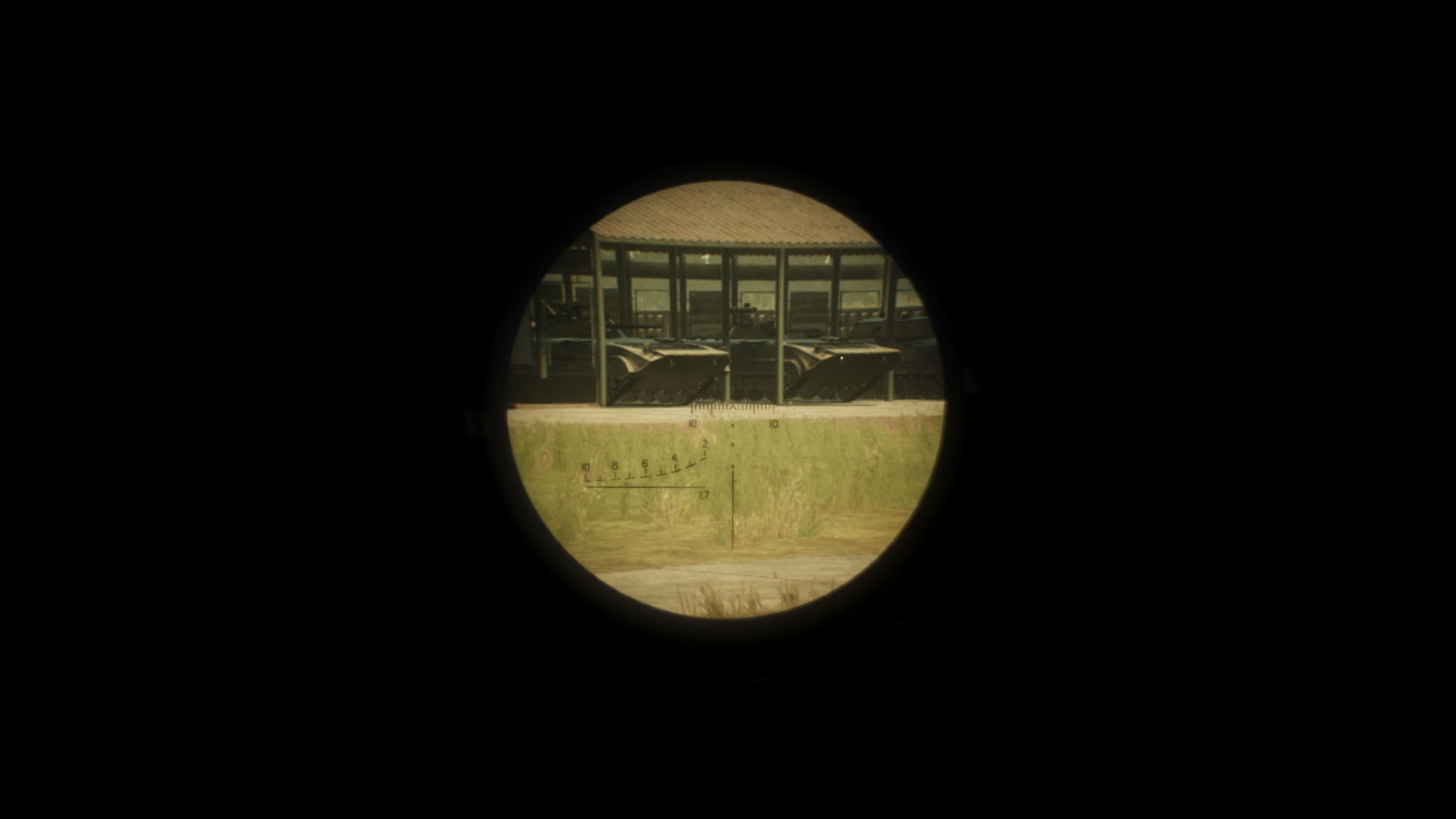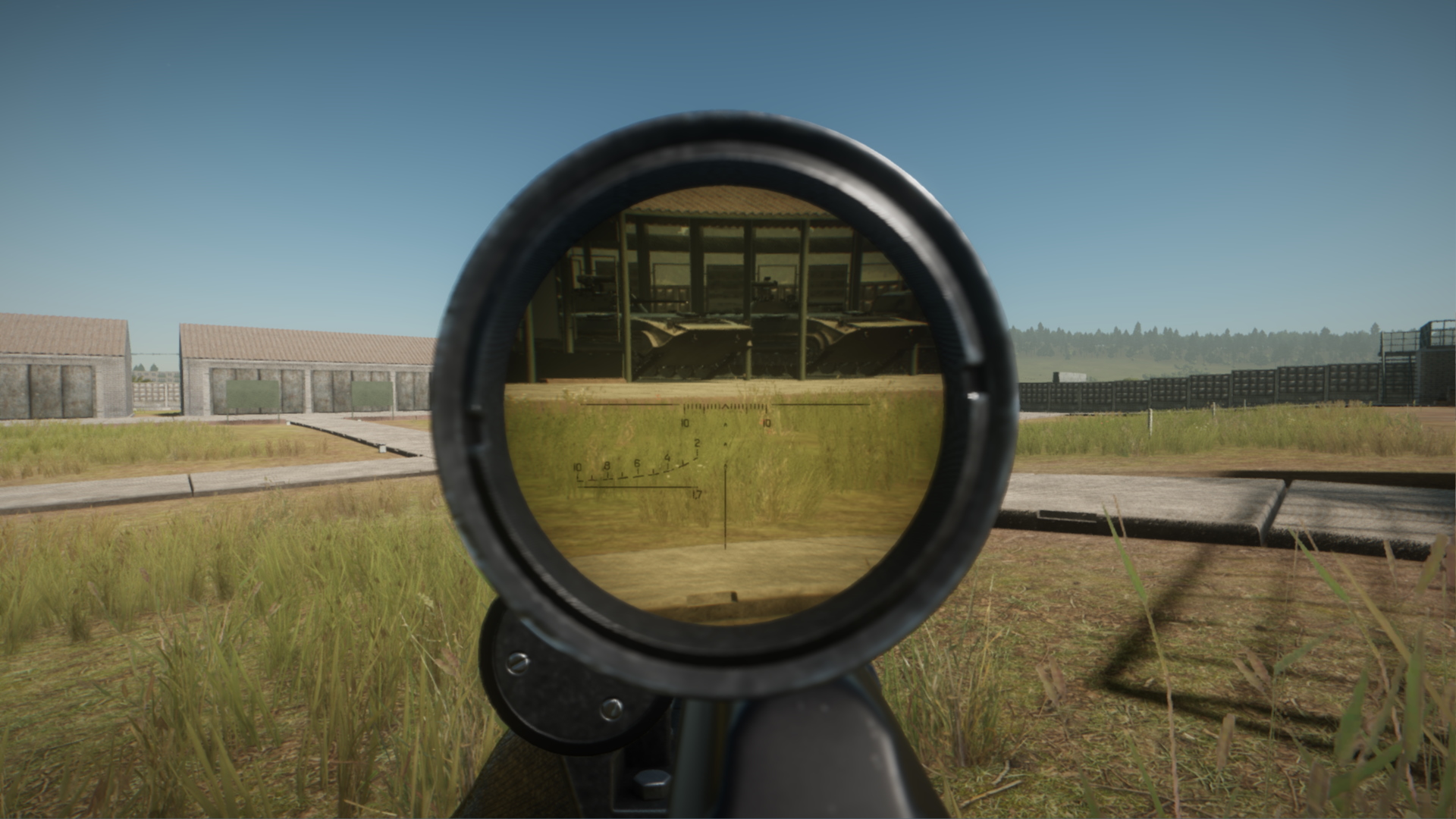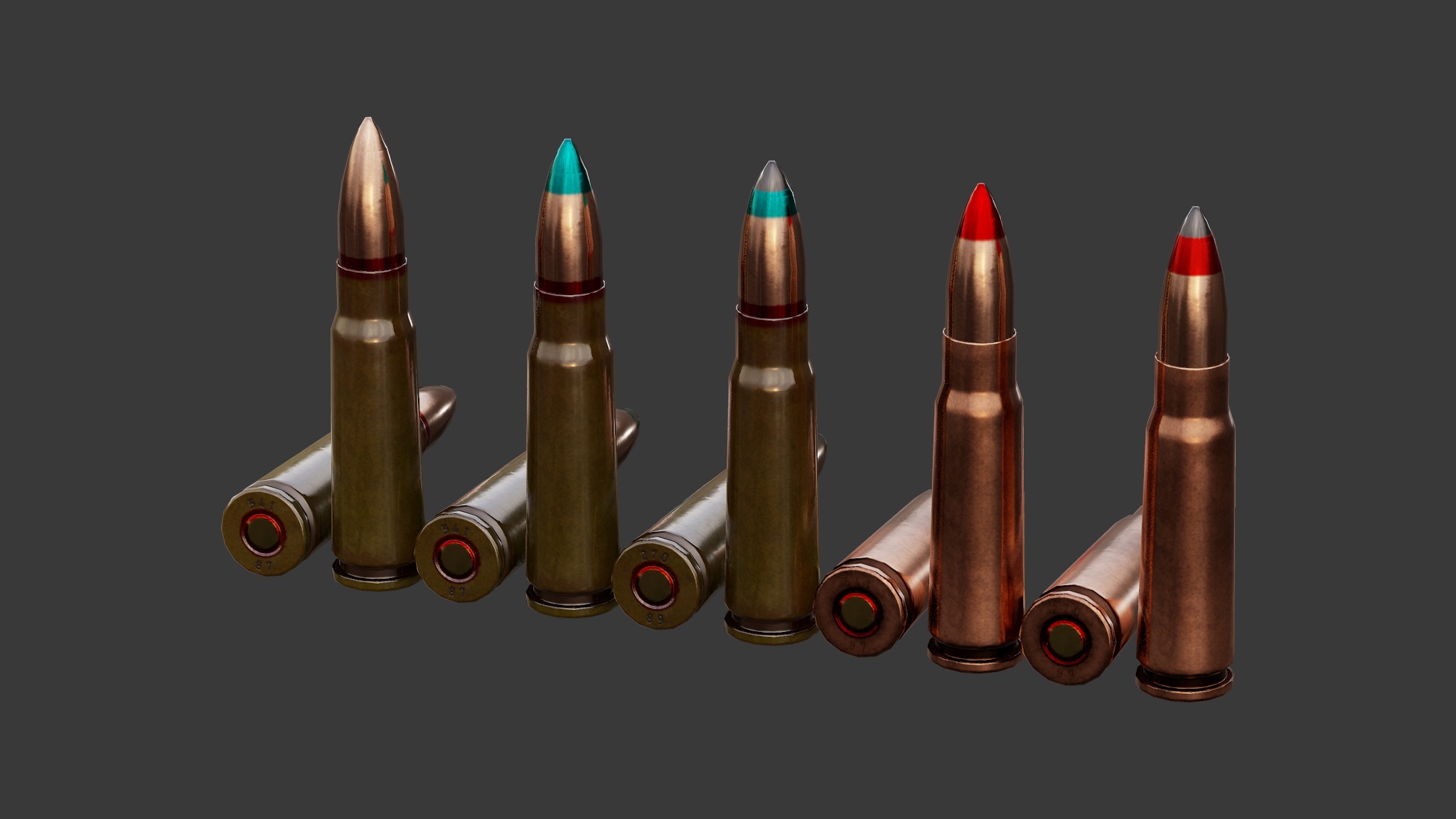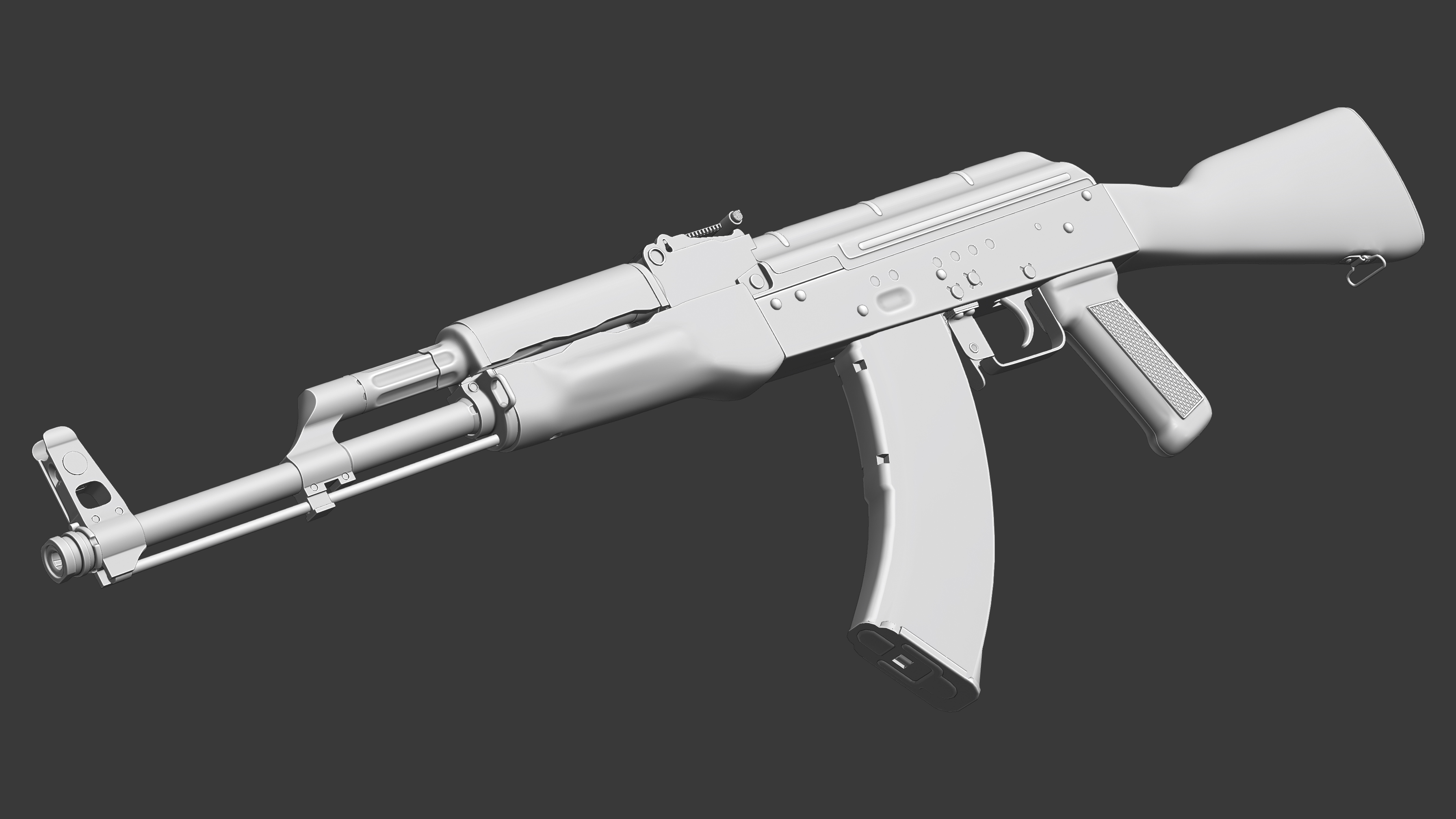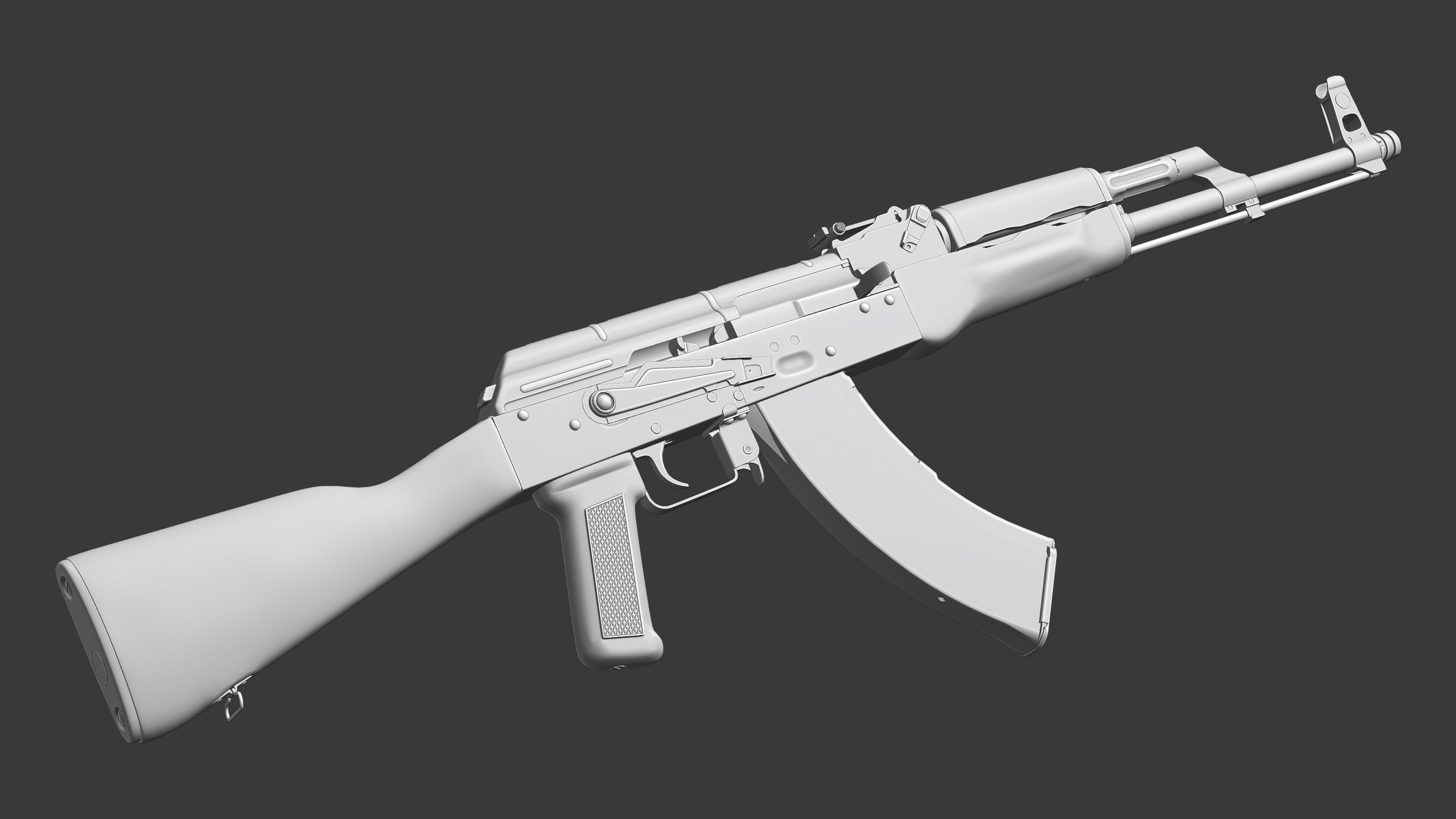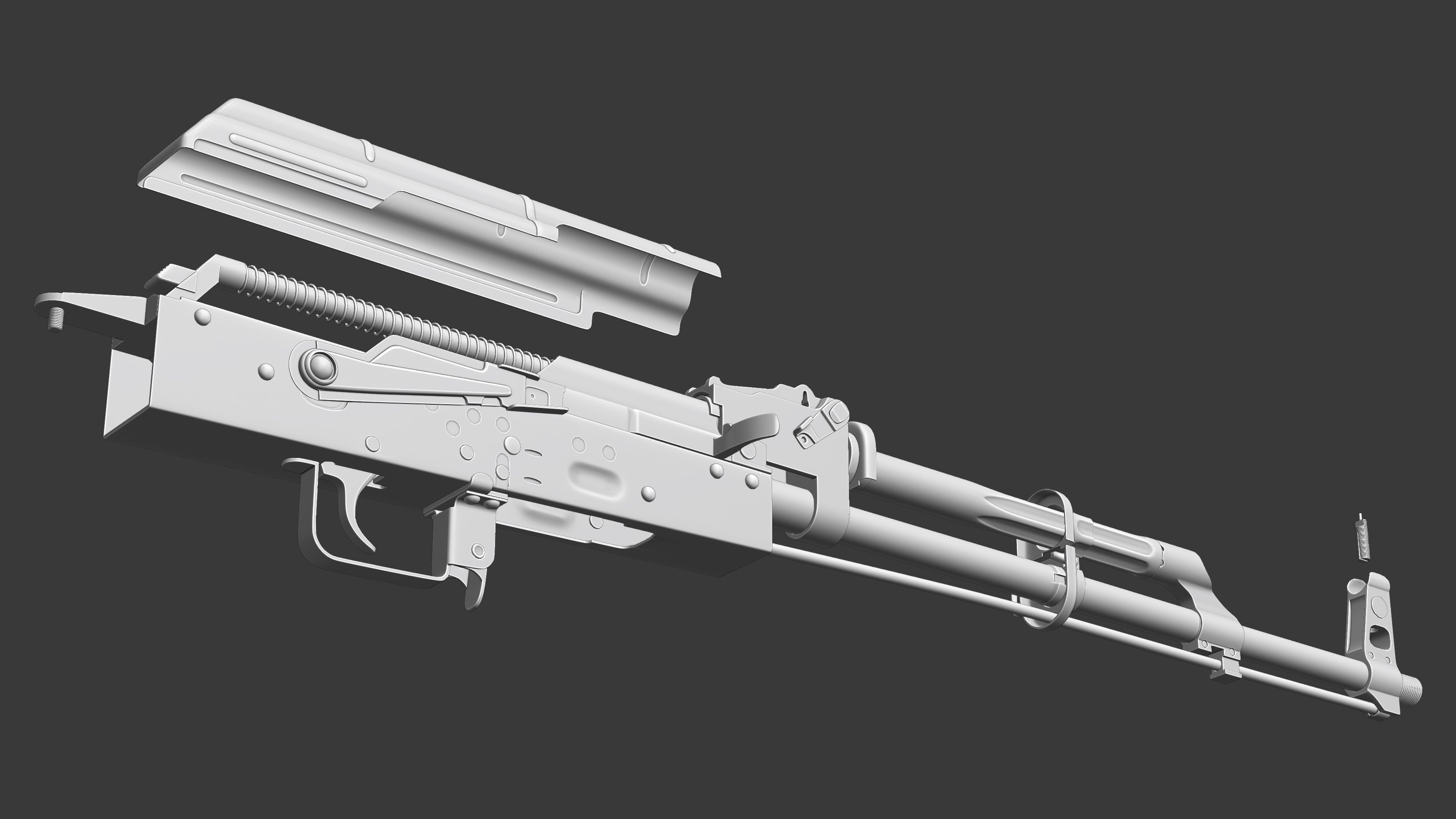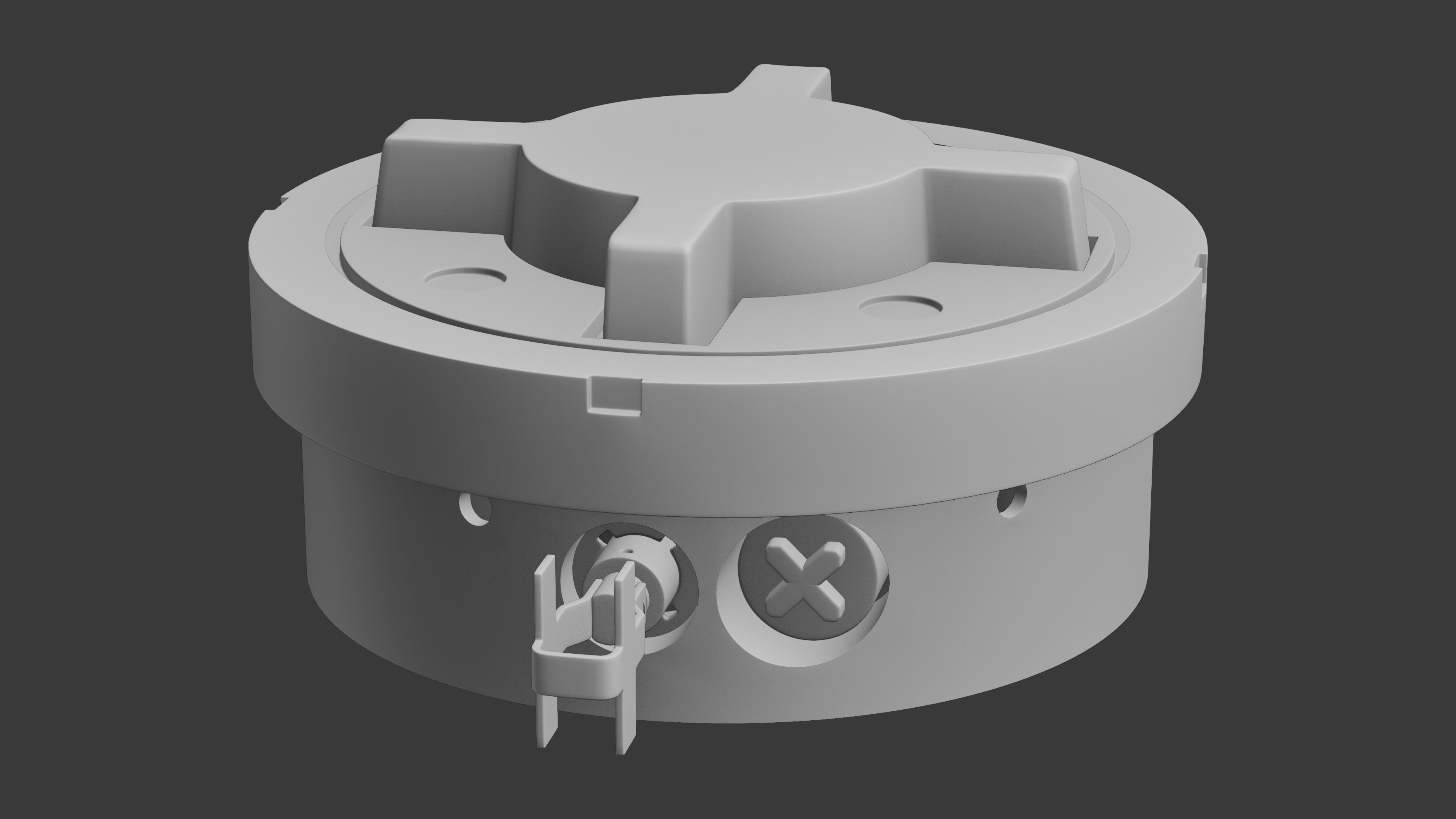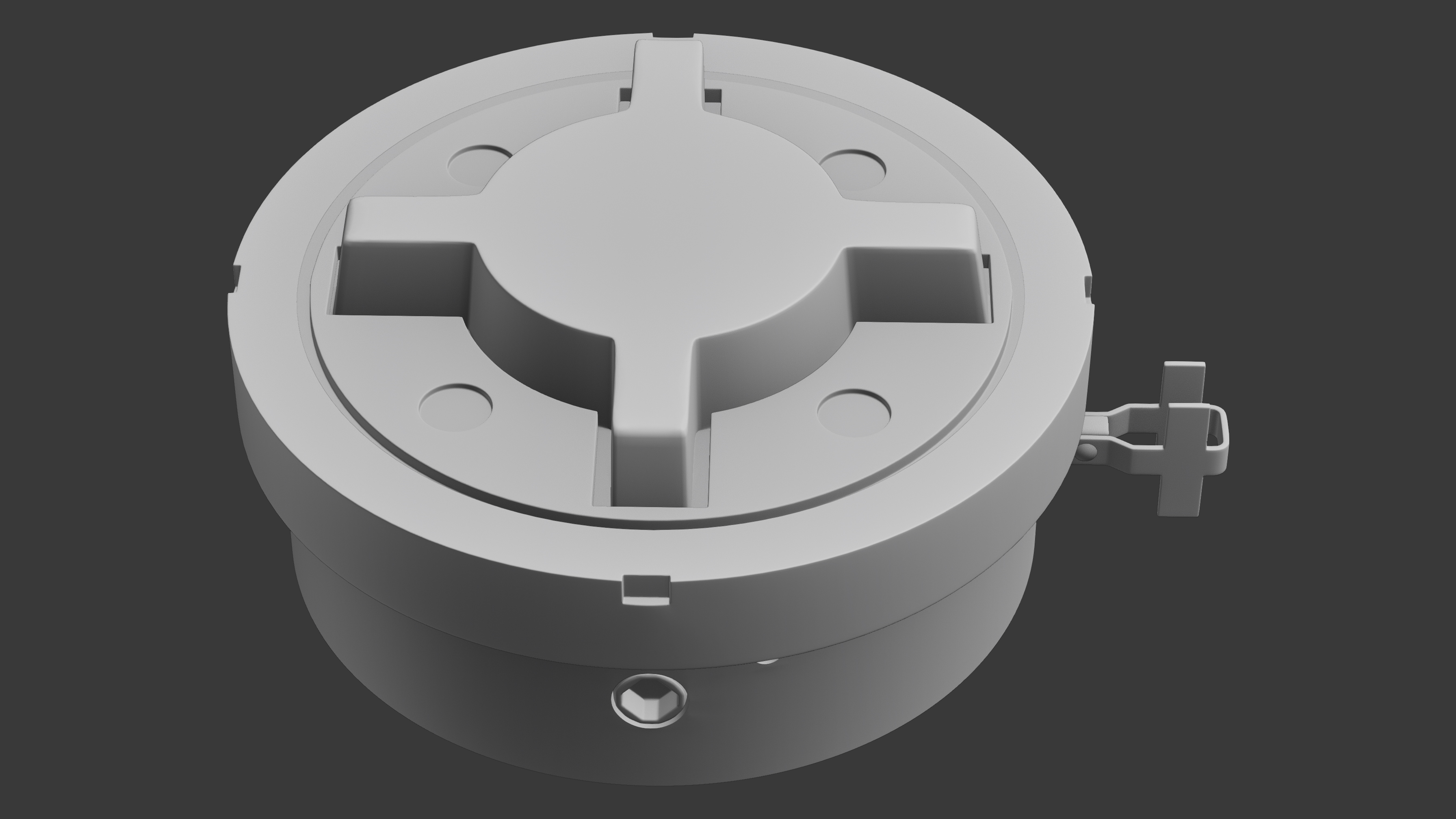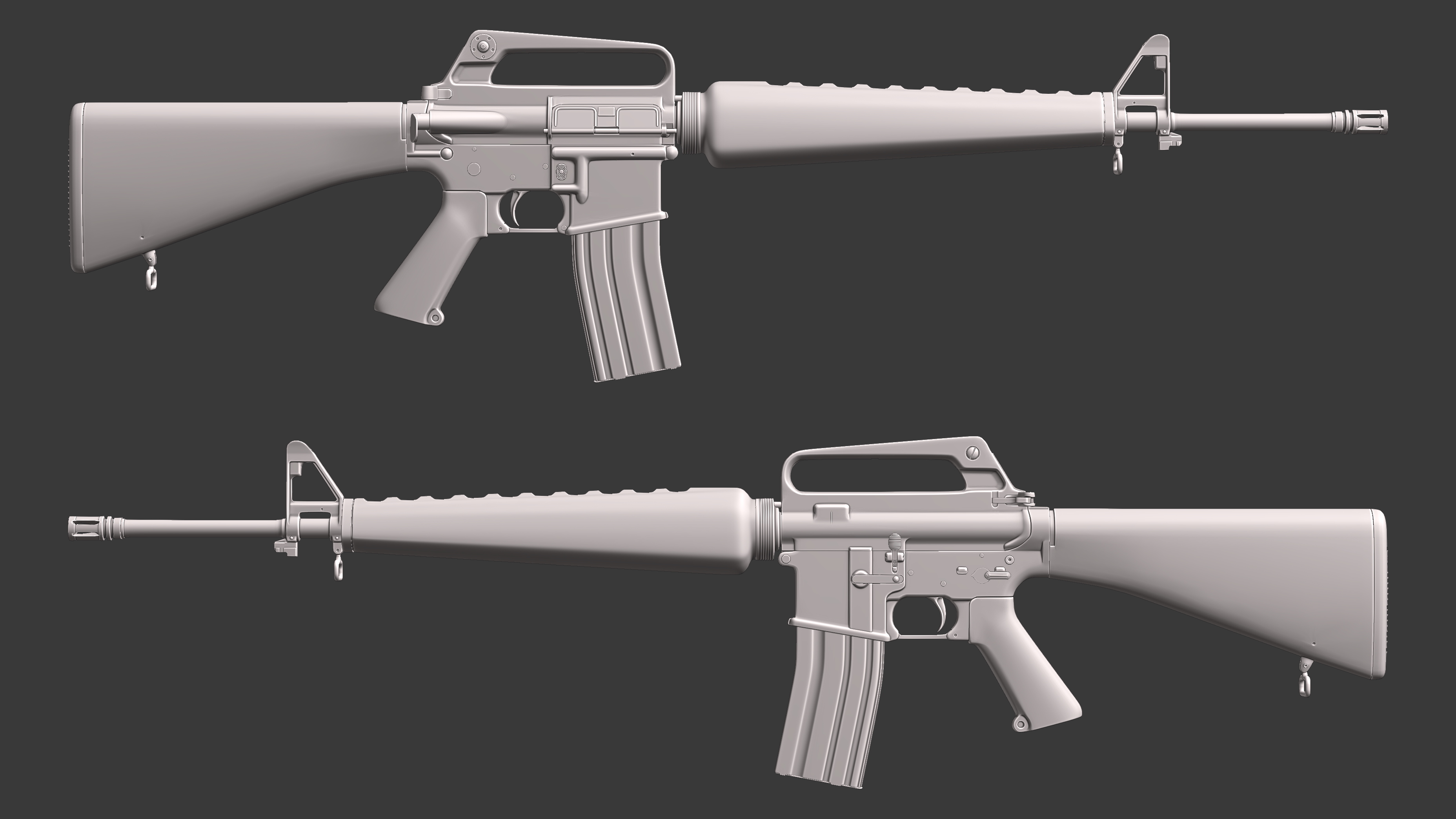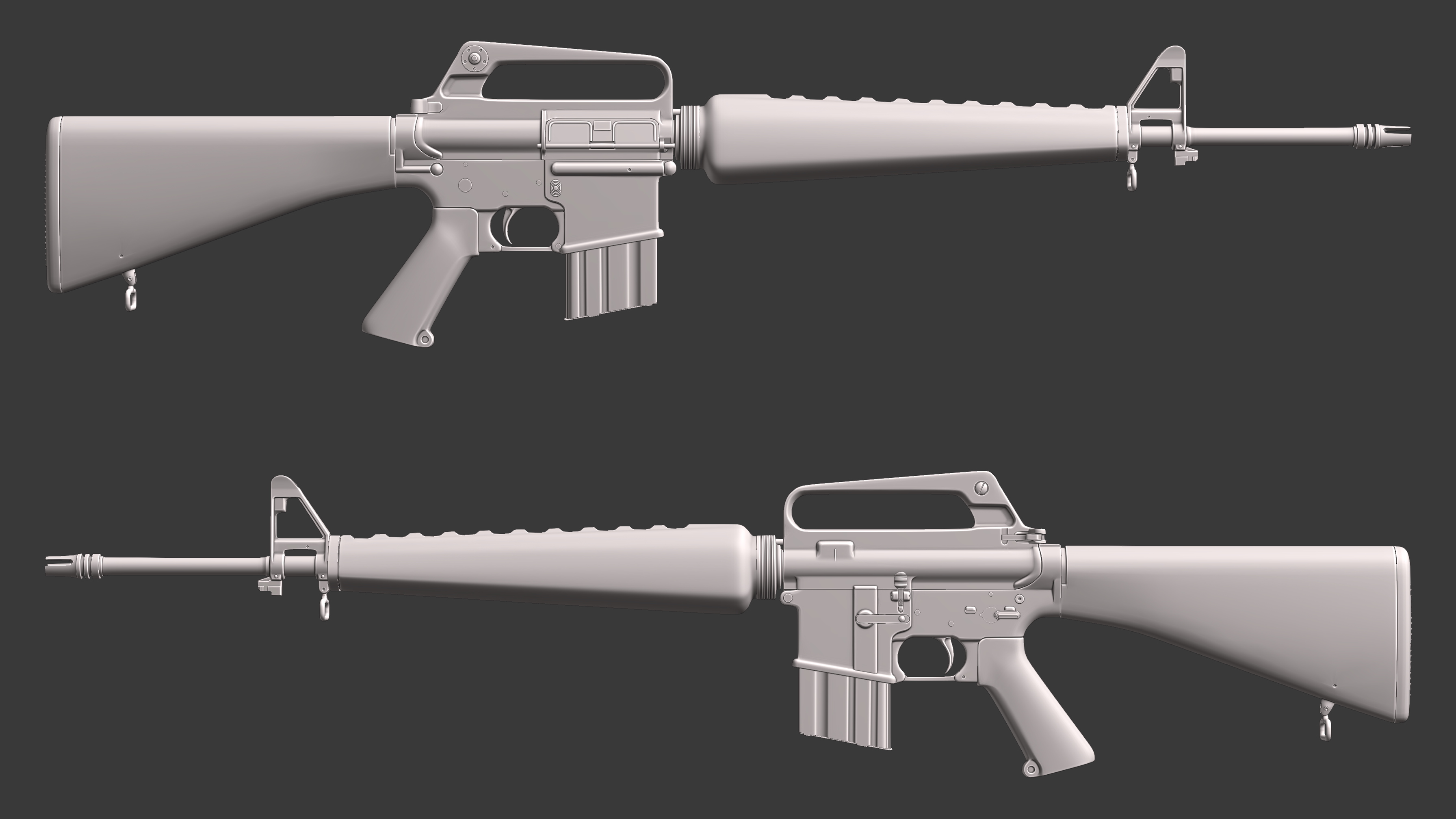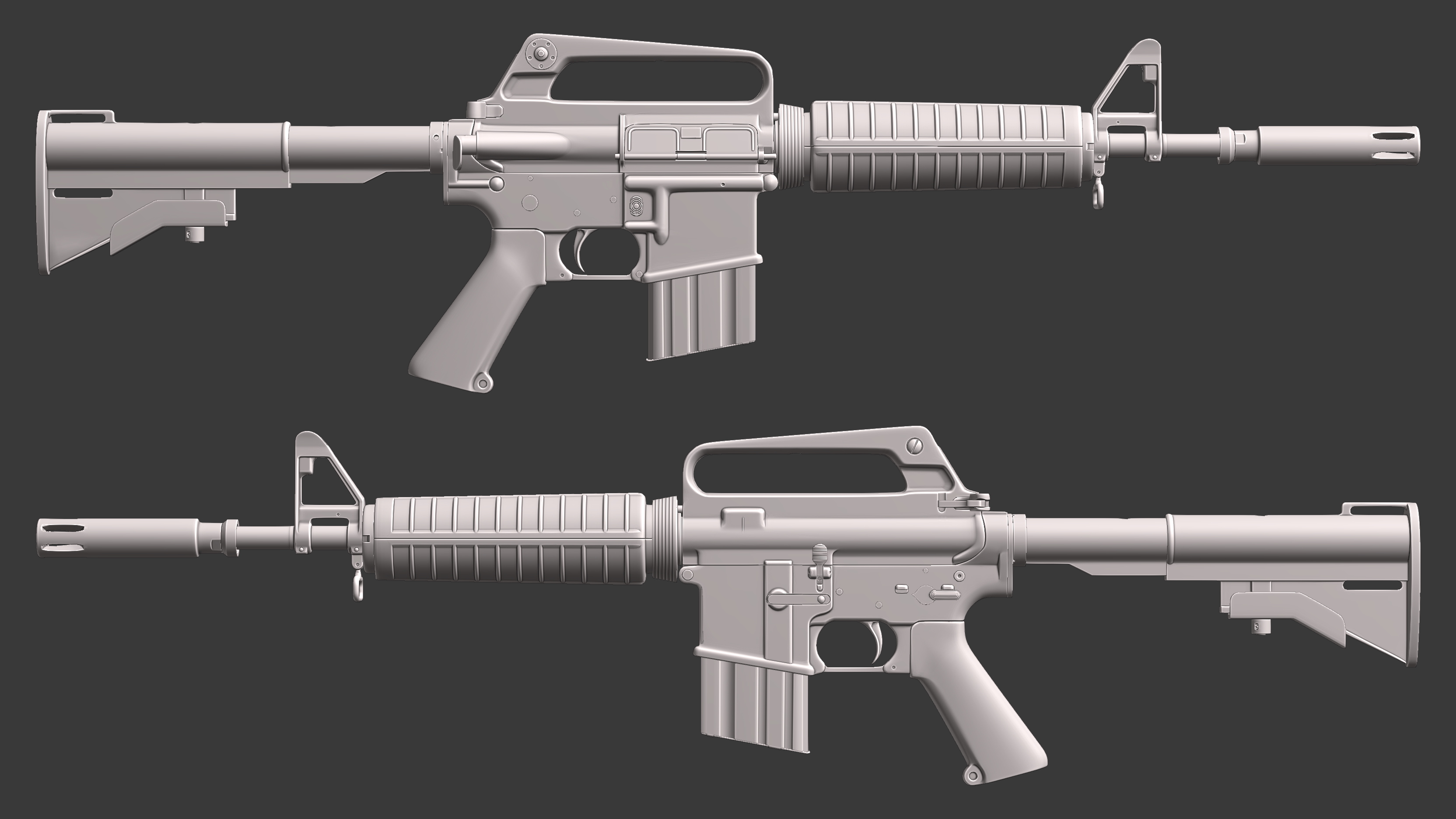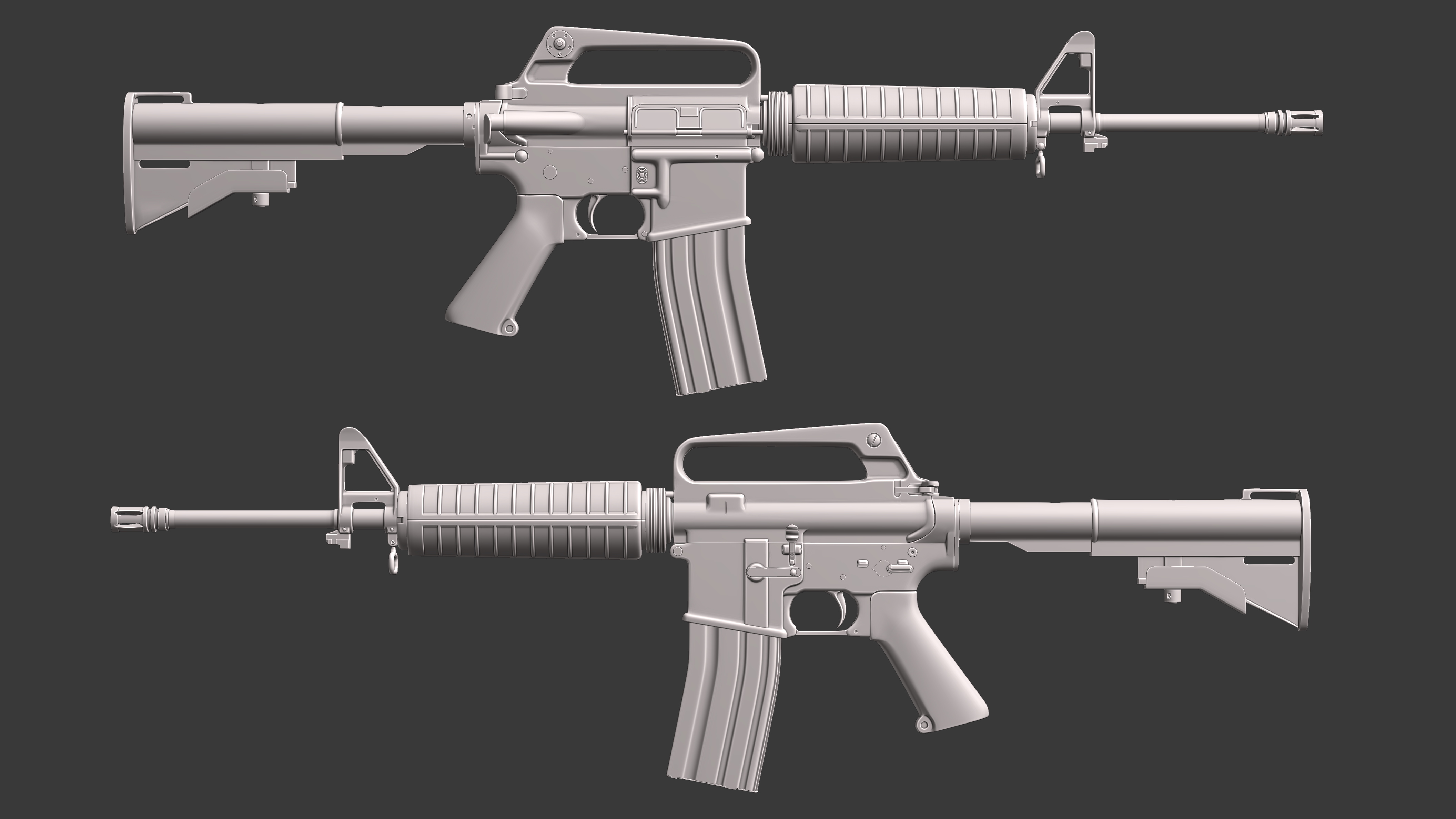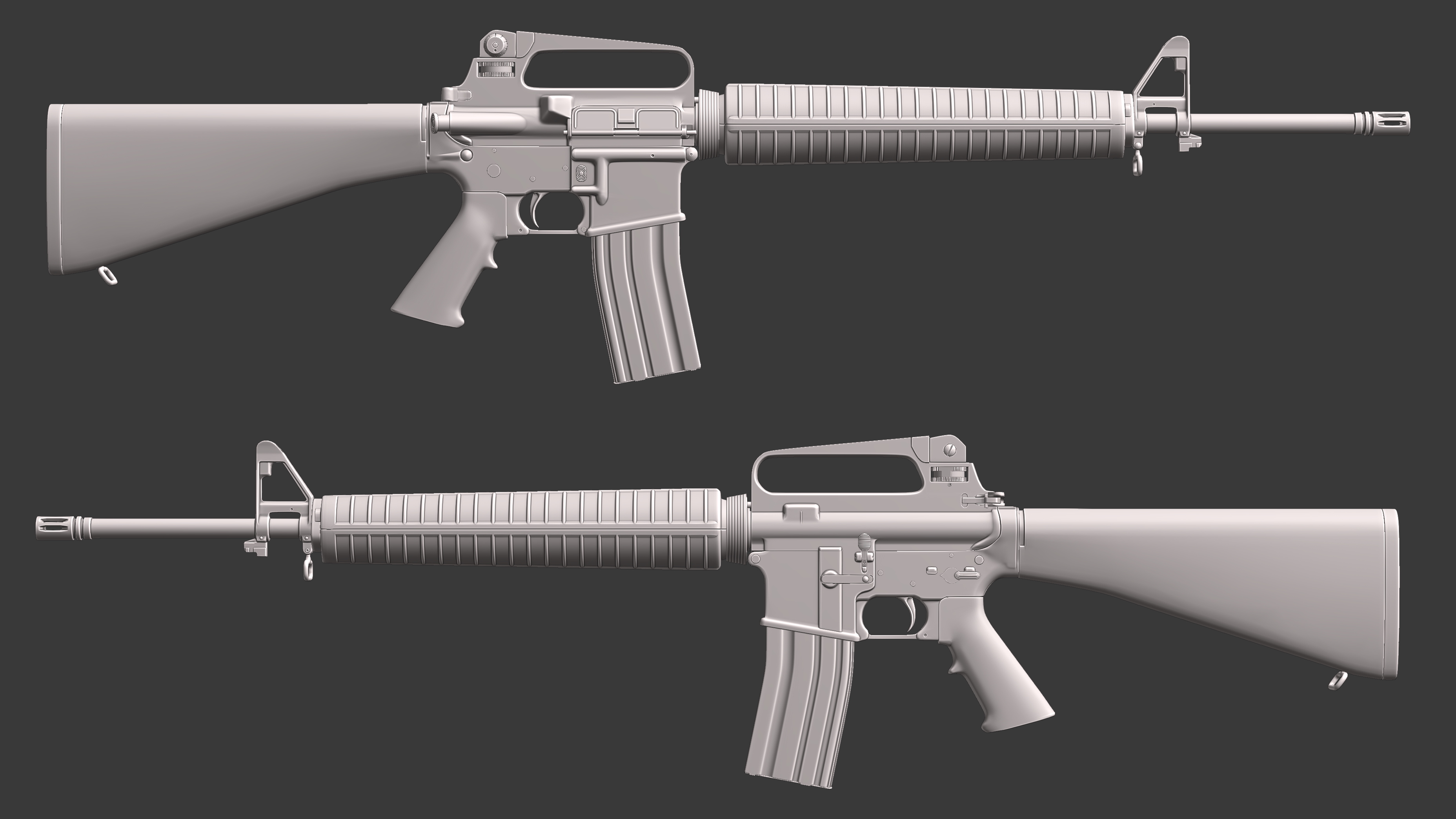Dec 31, 2021
Development Update 15
As 2021 comes to a close (feels like déjà vu) we'd like to round up the advancements we've made since our last development update, such as our improved weapon handling, foliage being able to be set ablaze, and high-poly renders of our family of M16 rifles for the United States and other NATO forces, along with a general summary of some of the progress we've made in the year!
So, little time to spare, we'll jump straight into our first showing, our improved PSO-1 (ПСО-1) model!
While our previous PSO-1 model was serviceable in terms of functionality, we shall not rest until we provide you the players with the most authentic models we can muster, and considering one of our developers had recently come into possession of an authentic original Soviet PSO-1, we only saw it as right to model it after it!
In addition to the model looking nicer in general, we've also added a lot more functionality to the PSO-1 in the form of a few new features.
After hearing your pleas of "WHERE НАГЛАЗНИК", we made it a priority to give the PSO-1 its correct eyecup which as in real life gives the shooter a bit more scope stability (reducing scope shadow) at the cost of a lack of peripheral vision.
Like many other elements of weapons in Afterconflict, the PSO-1's eyecup can be removed based on the player's personal preferences and play-style, so be sure to experiment and figure out which you're more comfortable with using when you play!
For the PSO-1's second feature addition, some context in the form of another new addition is needed.
As you saw in Development Update 15, the Soviet T-72B (Т-72Б) tank has arrived in Afterconflict, and with it we intend to properly reflect its real-life capabilities in-game, and one of those capabilities is that of its "Luna" (Луна) Infrared (IR) Spotlight which shines a bright beam of IR light virtually invisible to the naked eye but visible with devices such as night vision.
Here you can see the said spotlight as viewed at night through the NSPU (НСПУ) night scope (as originally seen in Development Update 13):
Now that you're up to speed, our second feature addition of the PSO-1 is the oft-forgotten IR light detector present on earlier models of the scope; when activated, the filter highlights IR light, even during the daytime, as seen here:
However, due to its general ineffectiveness, especially with NATO forces largely focusing on passive night vision devices over active ones (I.E: Requires an IR light source to illuminate targets) even on vehicles, the PSO-1's IR detector was removed on later production models, but that certainly hasn't stopped us from including it!
Though unsuccessful in this attempt, the 9K31 and other similar SAM systems will be invaluable in the defence against enemy air assets while playing Afterconflict.
But while the skies are certainly to be feared, there's still plenty down on the ground to be feared, including the elements themselves.
An often understated part of combat ever since it was first discovered and weaponized is fire, from the Romans using incendiary arrows to burn enemy ships to the Soviets using incendiary ammunition to burn the fuel tanks of lightly armoured vehicles, we thought it right to depict fire as the destructive, unpredictable force it is in reality.
So, to that end we've started small with the ability for grass to be burnt, largely from sources such as tracers burning on the ground, incendiary ammunition, back blasts, explosions, etc. under the right conditions, however for this example the flammability of the grass was turned up for demonstrative purposes (along with a current lack of sound):
Eventually, we intend to give the player the ability to set all foliage ablaze, making tactical arson a viable strategy when in pursuit of a scorched-earth policy against the enemy team, because the enemy can't use vegetation as concealment if you've already burnt it down!
In terms of the player's own abilities, we've now given the player more control over weapon handling in various different ways!
Firstly, we've separated changing your weapon's magazine and chambering a new round, giving more control to a player performing an action such as changing ammo types (or trying to look cool), or a very worrying [click] for the unfortunate sod that forgot to chamber a round before getting into a close quarters battle:
Along with this, you can now also hold back your weapons bolt by simply holding your rechambering button, giving a more tactile response to reloading your weapon:
Aside from simply looking cool, this system also works the same for checking your weapon's chamber, allowing you to better track if your weapon is loaded without having to simply rely on HUD elements:
In the near future we intend to further iterate and innovate with this system, so stay tuned for that too!
Something you should always keep track of however is what ammo type you're using, as using the wrong sort of ammo with the wrong sort of gun (E.G: M855 in an M16A1/M193 in an M16A2) can have dire consequences, one of the best examples is that which you can see here:
As you can see, trying to fire 7.62x39 US (УС) ammo without the PBS (ПБС) suppressor it's designed for does not generate the required level of pressure needed to cycle the bolt, effectively turning your selective-fire assault rifle into a bolt-action rifle with a bullet that is effective at a few hundred meters at absolute most, even less in practical terms.
To complement this, we've also overhauled our Soviet ammunition models to add some more well-deserved detail!
In order:
5.45x39: PS (ПС), T (Т), US (УС)
7.62x39: PS (ПС), T-45 (Т-45), US (УС), Z (З), BZ (БЗ)
7.62x54R: LPS (ЛПС), T-46 (Т-46), PS Snajperskie (ПС Снайперские), PZ (ПЗ), B-32 (Б-32)
But don't think for a second that our overhauls have stopped there, we've been improving and updating things across the board, including our beloved AKs (or more specifically, AKMs)!
As you can see, we've been making improvements to our AKM model and are currently in the high-poly modelling stage, and we'll be excited to show you the complete, detailed model in the new year with all of the small details you've come to expect of us!

But just before we jump over the Iron Curtain to see some new NATO high-polys (or perhaps while jumping over on account of the topic), we'd like to show your our new high-poly of the Soviet PMN-2 (ПМН-2) anti-personnel mine, the first of its kind in Afterconflict!
In Afterconflict, planting mines won't be quite as simple as many other shooters, with various factors you'll have to take into account such as the time taken to deploy it, the time it takes for the mine to arm after being deployed, and whether all of this is even worth the time if the enemy is liable to simply walk around or even over it, so if you decide to plant a mine, make it count.
Now for something a lot of you have been waiting for while we've been listing off a large list of our AK variants: our large list of M16 variants!
Over time, AR-15 style rifles have become ubiquitous, seen in all sorts of different configurations with all sorts of different attachments, but it's not so often that the more retro AR-15 style rifles get the attention they deserve, and we seek to rectify that!
Starting off strong, we have the M16A1 (Model 603), improved from the XM16E1's (Also Model 603, confusingly) many shortcomings, the M16A1 served with distinction with the United States Army as their standard service rifle for near 20 years before it was replaced by the M16A2 during the mid-1980s, however it would continue to serve in a limited capacity all the way into the 2000s.
While the US Army demanded that the M16 design include a forward assist, the United States Air Force had no interest in this feature, so while the Army and other branches used the M16A1, the USAF elected to use the M16 (Model 604), and while many M16A1s would be rebuilt into M16A2s, later USAF M16s being rebuilds of previous USAF-issue rifles such as the M16 was effectively the standard.
The USAF were not the only NATO force to use the M16 either, as the British Armed Forces acquired a number of M16 rifles of different varieties (mostly "slickside" ones such as the Model 604) for limited issue in a variety of locations such as Northern Ireland, Germany, the Falklands, Belize, Borneo, and Hong Kong, especially to special units such as the Special Air Service (SAS) and Special Boat Service (SBS).
While the M16 was designed from the ground-up to be light and portable, there was still a demand for a smaller carbine variant of the rifle to be used by those working within confined spaces such as vehicle and aircraft crew, along with special forces units.
So after some teething issues with the Model 605, GX-5857 (Model 607), and the earlier iterations of the XM177 series with the XM177 (Model 610) and XM177E1 (Model 609), the XM177E2 (Model 629) was developed: sporting a 11.5" barrel length and distinctive flash hider/moderator, while it did still retain some of the issues of the earlier models, it nonetheless served with distinction with United States special forces units such as the Military Assistance Command, Vietnam, Studies and Observations Group (MACV-SOG)
The slickside USAF counterpart to the XM177E2 would be the GAU-5A/A (Model 630).
While the XM177E2 was created during a time of great experimentation, the M16A1 Carbine (Model 653) created the initial blueprint for what would later become the M4 Carbine (Model 920), with its 14.5" inch barrel length and default use of a standard M16A1 flash hider over the XM177 series' unusual flash hider/moderator; the M16A1 Carbine would never become standard issue, but that wouldn't stop it from becoming a common staple amongst various forces of the US Armed Forces, especially special forces units such as the United States Army Rangers and United States Navy Sea, Air, and Land (SEAL) Teams.
Similar to the M16, and to a degree the XM177E2, the M16A1 Carbine also found its way into the hands of British special forces units.
As mentioned earlier, during the 1980s an updated version of the M16 designed to fire the new NATO standard SS109 round (having been developed as the M16A1E1) was made standard across the entire US military, albeit with an at times controversial array of updates spearheaded by the United States Marine Corps (USMC): such as a vastly more adjustable set of rear sights (preferred by the US Marines due to its greater capacity to be used for target shooting) and non-resetting 3-round burst (which will be depicted accurately in Afterconflict).
When newly named M16A2 (Model 645) was introduced, the USAF finally standardised with the other branches of the US military and made the M16A2 their standard service rifle, albeit the fact that, as alluded to earlier, many USAF "M16A2"s were Frankenguns, created with the parts of earlier models of USAF M16s (which we intend on allowing you to do in Afterconflict)!
And the last M16 high-poly we have for you here today (though by no means the last we intend on including in Afterconflict. We already know how much you want to see the M231) is one that most of you are likely to recognise in one form or another, the M16A2 Carbine (Model 727); just as the M16A1 Carbine was the 14.5" barrel answer to the M16A1, the M16A2 Carbine was the 14.5" barrel answer to the M16A2, with all of its changes (for better or for worse), along with a few more specific improvements from the M16A1 Carbine such as replacing the older style collapsing aluminium stock with the plastic "fiberlite" one.
While the M16A1 Carbine set the blueprint for the M4 Carbine, the M16A2 Carbine would be largely indistinguishable from the early XM4 Carbine (aside from its unique barrel profile), with the final, early-production M4 Carbine only largely being different in the addition of a MIL-STD-1913 rail to its upper receiver.
While the M16A2 Carbine had less time to settle in and disseminate amongst US forces than the prior M16A1 Carbine, it still found use among specialist units such as USMC Scout Sniper teams.
While we've given our AKs a lot of attention over the last year or so, worry not, we'll be giving the same level of attention to our NATO weaponry too in the new year, and if you spot anything we could improve upon, whether NATO or Pact-centric, do not hesitate to contact us about it!
As with last year, while things have been tough for all of us, we have managed to make great strides in our development of Afterconflict in 2021, from the addition of functioning compasses and advanced scope functionality, to our first highly detailed tank and the ability to set the world ablaze (And who could forget the North Korean Type 88-1?), we've got many things on the way in 2022 that we're sure you'll be just as excited about as we are!
We Hope You Had a Very Merry Christmas, and We Wish You a Happy New Year!
On our Discord server we discuss everything from the game and Cold War history to posting photos of hedgehogs!
We hope you enjoyed reading this development update, if you wish to keep up to date with all Afterconflict updates, be sure to follow our Twitter feed too.
As Ever: Stay Tuned!

